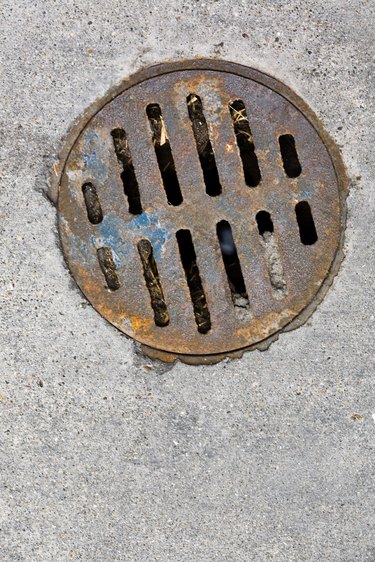
If you have a slimy discharge from your sump pump, you probably have a problem with iron bacteria, which is also known as iron ocher, iron algae or "the red stuff." The bacteria that feed on iron form a sticky, slimy, jelly-like deposit in your drainage system and well. Similar bacteria cause a problem with manganese or sulfur. The bacteria grow quickly and are difficult to remove, especially when they dry.
Damage
Video of the Day
Iron bacteria don't cause disease, but they can corrode pipes and plumbing equipment if they grow thick enough. Chunks of corroded plumbing break away and clog your system. In addition, the bacteria can make your drinking water look reddish or brown and give it an unpleasant taste and smell. The bacteria don't limit themselves to your sump pump either; they can be found on the inside of water tanks, inside the toilet tank, on laundry machine screens and on the ends of faucets.
Video of the Day
Symptoms
In addition to the red, gray, yellow, black or orange-brown slime, you may see oily rainbow colors on the surface of the water around your sump pump. You may smell an unpleasant swampy or sewage-like odor or notice red or orange stains on your basement floor or at the end of a pump discharge.
Causes
Iron bacteria get into your water system in a number of ways. They can be introduced into your water when your drainage system is installed or when the sump pump is taken out for repair or servicing and laid down on the ground. Bacteria can be introduced by contaminated tools or when flooding water finds its way into your system, reports "Waterproof" magazine.
Control
Inexpensive, long-term methods for controlling iron bacteria are few. You can use high-pressure water jetting to remove slime from clogged drains, but if the drain slots are narrow, the jetting water may not remove it all. Jet cleaning isn't as effective, once the ocher ages and turns hard.
Flushing your drainage system with hot water will also remove iron bacteria. The water temperature must be between 140 and 160 degrees Fahrenheit, which can be a problem for some systems that can't handle hot water over 140 degrees. Another difficulty with controlling bacteria occurs because many drainage systems don't have enough access ports to allow a contractor to flush properly.
Acid solutions can be used to dissolve the iron, but acids should be neutralized before they're released into the groundwater because they're pollutants. Another problem lies in the fact that most sump liners also have holes that are too small. Inlet holes should be between 5/8 and ¾ inch, according to the University of Florida.
- Basement Questions: Iron Bacteria
- University of Florida IFAS Extension: Iron Ochre and Related Sludge Deposits in Subsurface Drain Lines
- Waterproof Magazine: Iron Bacteria -- The Red Stuff
- Century Waterproofing: Iron Bacteria (Iron Ochre) in Wet Basements
- British Columbia Ministry of Agriculture and Food: Drainage Fact Sheet